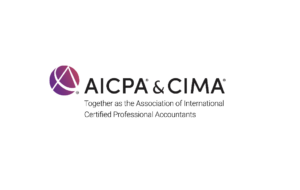CFOs need to tell the story the audience needs to visualise the metrics, so they can make good decisions.
There is little doubt that the age of big data has kicked into high gear, with data visualisation tools and technology becoming an essential element in the CFO’s toolkit to ensure sustainability of the business.
On 6 May, a CFO South Africa webinar, in partnership with Sage, hosted a panel of experienced professionals who discussed the practical aspects of data and visuals working together to result in great storytelling, supported by great analysis.
Gerhard Hartman, vice president, Medium Segment at Sage Africa and Middle East, opened up the discussion by focusing on the rapid evolution of data and its use.
“The way we looked at data a few years ago, before Covid-19, during Covid-19 and today is completely different,” he said. “When we talk about data visualisation, we have to understand that the story is the business. The end-game is data-driven decisions. When the visualisations are automated, businesses can make better decisions.”
However, Gerhard highlighted that such an outcome is a journey that businesses should undertake through a step-by-step approach.
“The first step is understanding what needs to be achieved, and that leads to unpacking the burning points in business to bring solutions, with the end result being a dashboard or intelligent data. This is followed by KPIs and then visualising and automating processes becomes part of the digital journey,” he explained.
“It is important when looking at automating and digitising to understand customer needs, both internal and external customers, and redefine and adapt when business changes. The way you looked at data last year is different to the way you look at data today. It is not a quick fix,” he added.
Data custodians
Mohammed Mosam, director at Sage Africa and Middle East, added that the typical assumption is that the CFO is the custodian of data, particularly financial data, but operational data is quite important too.
“Data by itself doesn’t mean anything, until you tell the story. CFOs have long been encouraged to become better storytellers, to take the metrics and pick the story the audience needs to make decisions so people can visualise the metrics. It’s critical to find the beneficial features of the data,” he pointed out.
According to Mohammed, the role players include a data analyst to mine the data, a custodian to make sense of the data and narrate the story of how the business is performing, as well as highlighting the trends and outliers.
He further unpacked data visualisation into exploratory and explanatory.
“Exploratory data visualisation talks to having lots of data and not knowing what it means while explanatory data visualisation is how the story is narrated whether it’s from a marketing or strategic business perspective, so you can articulate the information to the right stakeholders,” he explained.
Sam Hopwood, CFO at consumer goods company Mars Africa, added that companies tend to have a massive amount of data that they are unable to use, referred to as dark data.
“Data is there and should be used to help us make quicker and better decisions. Businesses might only use 10 to 20 percent of data, so the step change is not always new systems, but rather how to use more data in a useful way to drive insights to drive decision-making,” he said.
“Start with the questions you want answered and then go back and get the data, rather than the other way around,” he added.
Stress test
According to Sam, CFOs tend to be very good at “weather reporting”: putting up a slide and reading out the number.
“I challenge my team to describe financial performance without using numbers and when using a large dataset, to tell a story using only one number. If needed, this can also be stress tested through granularity to understand the root cause of a problem,” he explained.
Nicole Daniels, head of metrics, insights and analysis at Standard Bank, strongly supported the concept of understanding the reason for embarking on a project, what needed to be delivered and following that with developing visualisation.
“It’s with the end user in mind. We really try to understand what the end user is looking for and how we can provide that in the best possible way. Finance teams are inundated with a high volume of work that requires a lot of manual intervention to display information through spreadsheets and PowerPoint presentations,” she said.
“Data visualisation can be produced in a way that doesn’t actually need a presenter to present the information to the audience. The digital dashboard is so intuitive and flexible and anyone can leverage the information to influence decisions as business understands the insights derived from data,” she added.
Nicole expanded on this by explaining the 80-20 rule, with 80 percent of the data being used for analysis and 20 percent for insights.
“We are all in the same boat when it comes to data integrity and usability. A lot of time and focus goes into the numbers. We are consistently looking at ways to improve data integrity through mining curation and even in the non-financial metric worlds. This is a journey and we don’t have all the answers,” she said.
Her parting advice to attendees was to be open to change, ensure consistency and transparency of data and focus on appealing formats, as that deepens interest and accelerates adoption.










